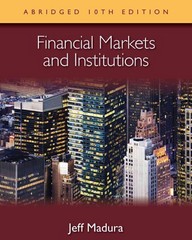Recently, Ben Holt, Blades chief financial Officer (CFO), has assessed whether it would be more beneficial for
Question:
Recently, Ben Holt, Blades’ chief financial Officer
(CFO), has assessed whether it would be more beneficial for Blades to establish a subsidiary in Thailand to manufacture roller blades or to acquire an existing manufacturer, Skates’n’Stuff, which has offered to sell the business to Blades for 1 billion Thai baht. In Holt’s view, establishing a subsidiary in Thailand yields a higher net present value (NPV) than acquiring the existing business. Furthermore, the Thai manufacturer has rejected an offer by Blades, Inc., for 900 million baht. A purchase price of 900 million baht for Skates’n’Stuff would make the acquisition as attractive as the establishment of a subsidiary in Thailand in terms of NPV. Skates’n’Stuff has indicated that it is not willing to accept less than 950 million baht.
Although Holt is confident that the NPV analysis was conducted correctly, he is troubled by the fact that the same discount rate, 25 percent, was used in each analysis. In his view, establishing a subsidiary in Thailand may be associated with a higher level of country risk than acquiring Skates’n’Stuff. Although either approach would result in approximately the same level of financial risk, the political risk associated with establishing a subsidiary in Thailand may be higher then the political risk of operating Skates’n’Stuff.
If the establishment of a subsidiary in Thailand is associated with a higher level of country risk overall, then a higher discount rate should have been used in the analysis. Based on these considerations, Holt wants to measure the country risk associated with Thailand on both a macro and a micro level and then to reexamine the feasibility of both approaches.
First, Holt has gathered some more detailed political information for Thailand. For example, he believes that consumers in Asian countries prefer to purchase goods produced by Asians, which might prevent a subsidiary in Thailand from being successful. This cultural characteristic might not prevent an acquisition of Skates’n’Stuff from succeeding, however, especially if Blades retains the company’s management and employees.
Furthermore, the subsidiary would have to apply for various licenses and permits to be allowed to operate in Thailand, while Skates’n’Stuff obtained these licenses and permits long ago. However, the number of licenses required for Blades’ industry is relatively low compared to other industries. Moreover, there is a high possibility that the Thai government will implement capital controls in the near future, which would prevent funds from leaving Thailand. Since Blades, Inc., has planned to remit all earnings generated by its subsidiary or by Skates’n’Stuff back to the United States, regardless of which approach to direct foreign investment it takes, capital controls may force Blades to reinvest funds in Thailand.....
1. Based on the information provided in the case, do you think the political risk associated with Thailand is higher or lower for a manufacturer of leisure products such as Blades as opposed to, say, a food producer?
That is, conduct a microassessment of political risk for Blades, Inc.
2. Do you think the financial risk associated with Thailand is higher or lower for a manufacturer of leisure products such as Blades as opposed to, say, a food producer? That is, conduct a microassessment of financial risk for Blades, Inc. Do you think a leisure product manufacturer such as Blades will be more affected by political or financial risk factors?
3. Without using a numerical analysis, do you think establishing a subsidiary in Thailand or acquiring Skates’n’Stuff will result in a higher assessment of political risk? Of financial risk? Substantiate your answer.
4. Using a spreadsheet, conduct a quantitative country risk analysis for Blades, Inc., using the information Ben Holt has provided for you. Use your judgment to assign weights and ratings to each political and financial risk factor and determine an overall country risk rating for Thailand. Conduct two separate analyses for
(a) the establishment of a subsidiary in Thailand and
(b) the acquisition of Skates’n’Stuff.
5. Which method of direct foreign investment should utilize a higher discount rate in the capital budgeting analysis? Would this strengthen or weaken the tentative decision of establishing a subsidiary in Thailand?
Step by Step Answer:






